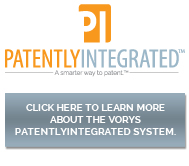Intellectual Property Alert: Federal Circuit Finds Computer Security Innovation to be Patent-Eligible
The U.S. Court of Appeals for the Federal Circuit has once again held that a software innovation is eligible for patenting as a claimed improvement in computer functionality. In Ancora Technologies, Inc. v. HTC Americas, Inc.,[1] the Court reviewed numerous prior opinions in which software innovations have been found to satisfy the Alice test for patent eligibility and added yet another example to the list of patent eligible software innovations in the form Ancora’s U.S. Patent No. 6,411,941 entitled “Method of Restricting Software Operation within a License Limitation.”
Prior to this decision, the ‘941 patent was well scrutinized. Ancora previously asserted the patent against other entities, including Apple, Inc., which resulted in a previous appearance before the Federal Circuit. In connection with the present case, HTC petitioned the Patent Trial and Appeal Board (PTAB) to institute review of the ‘941 patent on Section 101 and other grounds under the Covered Business Method review process. Perhaps foreshadowing the Federal Circuit’s conclusion, the PTAB “rejected the request to institute a review, concluding that the ‘941 patent claims a technical solution to a technical problem and comes within the ‘technological inventions’ exception for such reviews.”
The ‘941 patent generally describes an improved method for restricting unauthorized use of license software programs relying upon a key and a record. A unique key associated with the computer is stored in the computer’s Basic Input Output System (BIOS) module, such that the key cannot be removed or modified. The record is associated with particular licensed applications that are to be run on the computer. As described by the Court, “the ‘941 patent describes an asserted improvement based on assigning certain functions to particular computer components and having them interact in specified ways. … The asserted innovation of the patent relates to where the license record is stored on the computer and the interaction of that memory with other memory to check for permission to run a program that is introduced into the computer.”
In spite of the improvements ultimately recognized by the Federal Circuit, the district court granted a motion to dismiss, concluding that the claims were directed to an abstract idea. At step one of the Alice two-step test, the district court “concluded that the claims’ ‘focus is on the abstract concept of selecting a program, verifying whether the program is licensed, and acting on the program according to the verification.’” Under step two “the district court concluded that the claims contained no ‘inventive concept’ that makes their subject matter something significantly more than the abstract idea: in particular, ‘[s]pecifying that the BIOS be used to house the verification structure’ calls for nothing more than ‘[s]toring data in the memory of a computer component that generally stores data.’”
The Federal Circuit, however, took a different view. At step one of the Alice test, the Court looked to “the patent’s ‘claimed advance’ to determine whether the claims are directed to an abstract idea.” “In cases involving software innovations, this inquiry often turns on whether the claims focus on ‘the specific asserted improvement in computer capabilities … or, instead, on a process that qualifies as an ‘abstract idea’ for which computers are invoked merely as a tool.”
Reaching the conclusion that the claimed method was patent-eligible, the Court focused on the specificity of the claims with respect to the claimed improvement in computer security. The Court noted that “Improving security … can be a non-abstract computer-functionality improvement if done by a specific technique that departs from earlier approaches to solve a specific computer problem.” The claimed method specifically identifies how the improved security is achieved by storing a license record in a particular portion of the BIOS and using that structure for verification. This method results in an unconventional use of the standard BIOS component of the computer because “BIOS memory is typically used for storing programs that assist in the start-up of a computer, not verification structures comparable to the software-licensing structure embodied by the claimed invention.”
The Court further found that “the claim addresses a technological problem with computers: vulnerability of license-authorization software to hacking. It does so by relying on specific and unique characteristics of certain aspects of the BIOS that the patent asserts, and we lack any basis for disputing, were not previously used in the way now claimed, and the result is a beneficial reduction of the risk of hacking.”
The Court held “the claimed advance is a concrete assignment of specified functions among a computer’s components to improve computer security, and this claimed improvement in computer functionality is eligible for patenting.” “In short, claim 1 of the ‘941 patent is directed to a solution to a computer-functionality problem: an improvement in computer functionality that has ‘the specificity required to transform a claim from one claiming only a result to one claiming a way of achieving it.’”
PRACTICE TIP
The Ancora decision provides one more example to be added to the list of software inventions that pass muster under the Alice framework. While the line between patent-eligible and patent-ineligible subject matter remains open to interpretation, as illustrated by the opposite conclusions reached by the Federal Circuit and district court, the Federal Circuit’s analysis in Ancora provides useful guidance. Whether drafting or prosecuting claims, especially those directed to software innovations, careful attention must always be paid to the specificity required to ensure the claims remain focused on a solution to a problem and not merely the desired result.
__________________
[1] Ancora Technologies, Inc. v. HTC Americas, Inc., 2018-1404 (Fed. Cir. Nov. 16, 2018).


